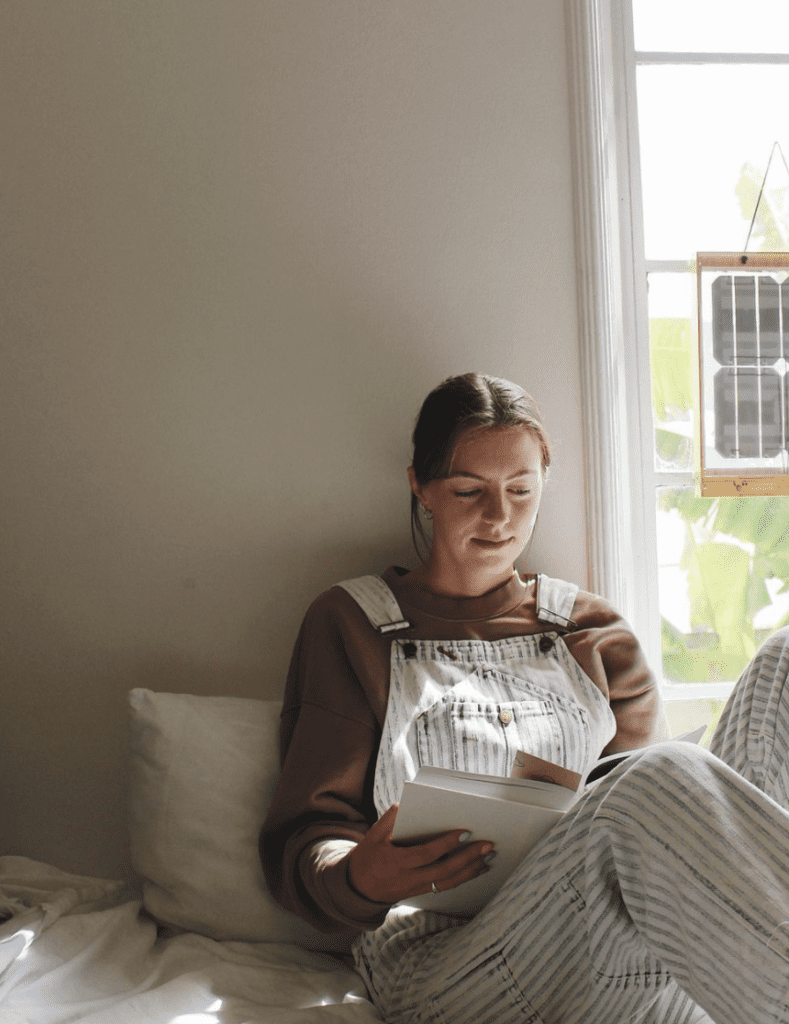Our Youth Ambassador Cristina Ciccolini interviews sustainable influencer Megan McSherry about overcoming the climate crisis through one conscious fashion choice at a time. From speaking on Greta Thunberg to confronting fast fashion companies, Megan gives us an inside scoop into her thoughts on the industry’s progress and how we can act now.
Expand on your journey of showing us how to be more environmentally conscious.
I love talking about my sustainable fashion and journey, in general, because I went through it all. I had a fast fashion blog where I wrote about all the latest microtrends, and I went to the mall every Sunday. So I was right there where most people are today. Once I started college, I learned about the environmental and ethical issues of the industry. It wasn’t sitting right with me, and that’s when everything changed. When I started my sustainable journey, all the people I could find had minimalist closets and no polyester. They seemed to be perfectly sustainable in their closet. So I said, “well, I’m just a college student. How can I do this when my closet is full of forever 21 clothes. Do I get rid of them? Do I buy all new sustainable expensive items?” From there, I documented my journey. People need to understand that everyone’s sustainable fashion journey looks different. It can start with the clothes that are in your closet. That’s why I was excited about my ebook, Make the Most of What’s In Your Closet. I’m so happy to see that people are open to it and interested in learning about the sustainable things that are already in your closet. Sustainable fashion is for everybody in that sense. It’s not exclusive; it’s not unattainable.
Did you find it was difficult to start your journey or was it a smooth go?
It wasn’t easy at the beginning. The younger you are, the more difficult it is. I was in my freshman year of college, and I was so used to buying fast fashion. It took a long time to quit. It has been a six-year journey. People need to understand that there is no perfect sustainable fashion person. It is a journey, and it looks different for everyone. It is not easy, but it is not impossible. People on Instagram can make it look effortless, but it takes time. A big part of the journey is figuring out what is sustainable.
In Vogue Magazine’s recent issue, “The Wonders of Greta Thunberg,” activist Greta Thunberg states how fast-fashion companies are “greenwashing.” What are your thoughts on “greenwashing?”
Greenwashing and fast fashion are some of the issues in the industry that make me the most annoyed. I feel like it’s misleading. These brands know that consumers, especially younger women in the fashion industry, are interested in more sustainable options. Although, not everyone like me goes to grad school to learn about supply chains and determine whether someone is legitimate. Most people can’t tell if an item is sustainable. In terms of politics, this is an area where marketing relies on key messaging. There needs to be rules and clear regulations because some companies can label their items as ‘made from cotton.’ That information doesn’t make it sustainable. There are multiple facets to sustainable fashion.
Can you share any personal experiences with companies regarding this issue?
I have many examples of brands pretending to be sustainable. The one that sticks out to me the most is an underwear subscription company. They told me that that they wanted to send me a free package. I asked about their sustainability because I couldn’t find anything on their website and I mentioned to them that I only work for sustainable brands. I was given a vague response which was: “All of our clothes are born in the U.S. Everything is made in fair trade certified factories, and we use cotton in one part of the underwear style.” I responded with: “Wow, that’s so cool that you’re fair trade certified. Why isn’t that on your website? I would be proud to be fair trade certified.” Their response was: “well, we do not want to put that information on our website.” I saw the red flags, but this can be easily misleading and believable to anyone else.
You use your platform to inform your audience about what governments are NOT doing for our planet. Do you have any advice for young voters or voters in general in the next election?
My first piece of advice is to vote in every election, even the small ones, not just the federal elections. We just had a governor recall election in California. You want to be an active voter, do research, and see who is funding them. Something I look into during the U.S. elections is a website called opensecrets.org. I can search up the elected official or member, and it will disclose where they get their funding. For example, you can find out if a fossil fuel company is funding their campaign and refer to their climate plans. Look into who you’re voting for and what they are going to do for the environment.
Do you think we are seeing more inclusivity in terms of sizes in sustainable fashion?
I would say yes and no. There have been small businesses that have stayed committed to having sustainable clothes with inclusive size ranges. Although some of those brands have very high price tags, I will say that, as a whole, the fashion industry is becoming more inclusive in terms of size ranges. Although sustainable fashion seems to be behind on its sizes and prices, I feel we are moving in the right direction, but there is a lot that these big brands can learn from smaller brands. I hope the people who buy from those small businesses can help grow those brands to become accessible to everyone. We are going in the right direction, but there is more work to do.
Do you have any sustainable goals that you want to meet for the year?
In terms of sustainable goals, I want to work on setting more sustainable habits. I feel like it is super easy for me to get in the habit of doing all things at once and not to do them very well. For example, I want to compost all my food, collect all my cans, not purchase fast fashion and not thrift as much even though I love it. That can feel overwhelming because you can’t do all those things perfectly, especially not in a short period. It makes you feel like you’re not doing enough, and we do not need that energy here or ever. I’m focusing on one goal at a time. For example, I love thrifting but have a lot of clothes. I am focusing on not buying a lot of clothes at the thrift store. Even if I go, I will look around or not buy a lot and be conscious about what I’m buying. I can play around with styling and be an outfit repeater. Once I feel I have accomplished that goal, I move on to the next goal. My sustainable goal for the year is to slow down and focus on my energy until something becomes a habit.
Do you have any upcoming projects that you would like to share?
I’m always trying to figure out new ways to be more helpful to my community on whatever platform I’m on, including my blog, and that’s how my first ebook came about. I was getting a ton of questions like, “How can I be a part of sustainable fashion when it is so expensive?” “Brands don’t carry my size,” or “how can I be a part of this movement on a budget?” This is why I made Make the Most of What’s in your Closet. I want to see people who aren’t interested become interested in sustainable fashion as a pressing issue.
What is your advice for the younger generation wanting to make a change?
You, as an individual, have such potential to make a change, but at the same time, it is not only your responsibility to make a change. I think it’s easy to feel inspired, but you can’t put absolute pressure on yourself to change the entire fashion industry as one young person. Be inspired but team up with people around you, whether it be with people you met online or at your school. Team up with other people because there is so much power when we, young individuals, come together, and it’s tough to achieve that same kind of power and strength just as an individual alone. It helps lessen the burden of feeling like the weight of the entire world of the sustainable fashion industry is on your shoulder.
On top of that, you don’t need to be creating sustainable fashion legislation to make a difference. By just having conversations with your friends or your family, talking to people about these issues, and just getting it out is enormous. It is such a vital part of this process. You don’t have to be a lawyer or the next sustainable designer to make a difference and have a valid role in this process. We all need to do the little things, and there will be those who take those significant policy roles and big organizations who are taking those big decisions from the top.
I didn’t learn about sustainability and the environmental impacts of the younger generation until I got to college and took an environmental science course by accident. I wasn’t looking to learn about it, and that’s a huge issue. Why do we know about nutrition? It’s essential to know about the food that we eat. So why aren’t we studying the planet in the same capacity? Sustainability impacts everything, our food, our energy, and so much more. I wish there were more education in the school’s curriculum so that they can move through the greenwashing claims and be able to identify these claims better.

